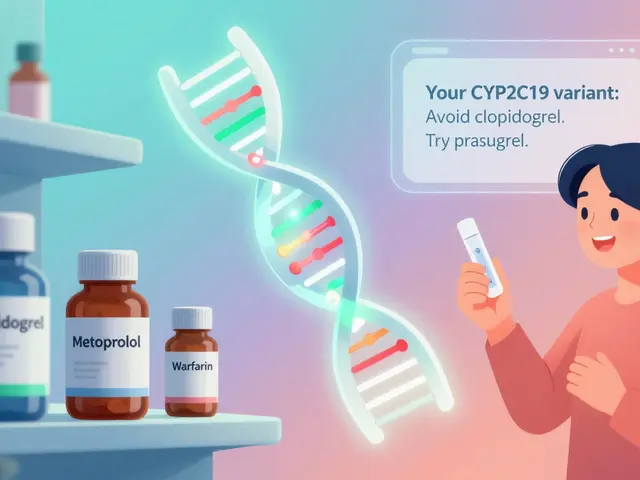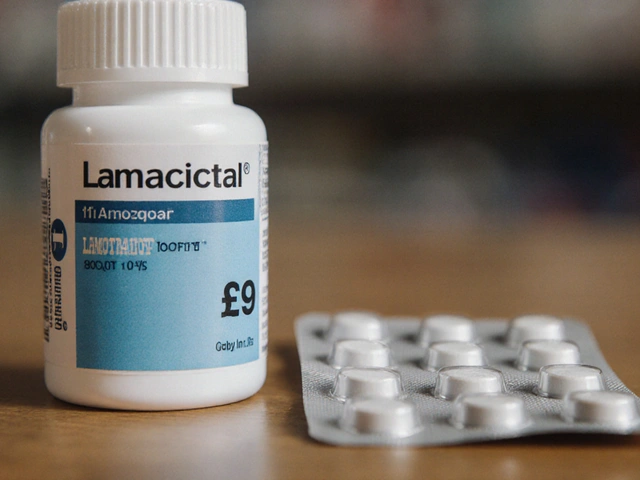Prilosec (Omeprazole): What You Need to Know
Prilosec (omeprazole) is a commonly used medicine that reduces stomach acid. People take it for heartburn, GERD, ulcers and acid-related damage. It comes as over-the-counter (OTC) Prilosec OTC and stronger prescription forms. Knowing when to use OTC and when to see a doctor makes a big difference.
OTC dosing is usually 20 mg once daily for short-term relief. Prescription doses can be higher or used longer depending on the problem. Typical prescription plans run from 4 to 8 weeks for ulcers or severe reflux, but your doctor decides based on tests and symptoms. Never double a missed dose — take the next dose at the regular time.
Side effects and safety
Most people tolerate Prilosec well. Common side effects include headache, nausea, constipation or diarrhea. Long-term use can raise risks: low magnesium, bone fractures, and gut infections like C. difficile. If you plan long-term therapy, ask your doctor about monitoring magnesium and bone health. Stop and seek help if you get severe belly pain, black stools, or sudden weakness.
Prilosec can interact with other drugs. It changes stomach acidity and affects drugs that need an acidic environment. It can alter levels of clopidogrel, some antifungals, and certain HIV drugs. Tell your provider about all medicines, supplements, and herbals you use.
Buying Prilosec online safely
If you consider buying Prilosec online, check a pharmacy's credentials first. Look for verification tools like PharmacyChecker or national pharmacy boards. A legit site will require a prescription for prescription-strength omeprazole. Watch out for prices that are unrealistically low, missing contact information, or sites that ship from unknown countries.
Read the label and verify the active ingredient is omeprazole. Check expiration dates and packaging when the package arrives. Use a credit card or a secure payment method and save order records. If anything feels off — wrong pills, damaged package, or no paperwork — contact the seller and your doctor right away.
On this site we cover buying tips and pharmacy reviews. Read our article "Where to Safely Buy Prilosec Online: Tips, Risks, and Reliable Pharmacies" for step‑by‑step checks. You may also find helpful guides on related drugs and online pharmacy safety in other posts tagged here.
Quick tips: use the lowest effective dose, try short courses when possible, and talk to your doctor about long-term plans. If symptoms persist despite Prilosec, ask about testing for H. pylori, allergies, or other causes. Prilosec helps a lot of people, but safe use and smart purchasing make it work better for you.
Checklist before you buy: confirm active ingredient and dose, check reviews and physical address, verify pharmacist contact, ask for prescription requirements, and confirm shipping speed and return policy. For treatment: keep a symptom diary, note foods that trigger reflux, avoid late meals and smoking, and use antacids for occasional breakthrough. If you need more than eight weeks or symptoms return quickly after stopping, see a doctor for tests and alternative therapies like H. pylori treatment or stronger acid suppression and careful follow-up.
 5 Jun
5 Jun
Prilosec: Uses, Side Effects, and Everyday Tips for Heartburn Relief
Prilosec, also known as omeprazole, is a popular medication for treating heartburn and acid reflux. This article breaks down how Prilosec works, common side effects, and practical tips to make the most out of your treatment. You’ll learn about its effectiveness, a few interesting science-backed facts, and ways to use it safely based on real-life experiences. Packed with practical advice and relatable examples, this article helps you navigate using Prilosec with confidence. Expect clear answers to questions you might have and tips you won’t find in the brochure.
Read More...




